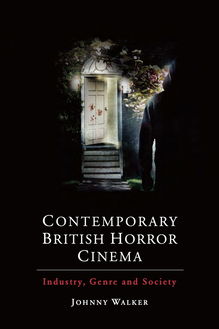authored |
Edited |
|
Rewind, Replay is the first history of Britain’s video boom. It considers the first programme distributors who, from the late 1970s, took chances on all sorts of commercial entertainment to attract consumer interest. It considers the birth of the video shop, the speed with which video rental became a habitual practice among the British public, and the key players who, at the height of a recession, invested wholesale into what contemporaneous media reportage was describing as a mere ‘plaything’.
Media historian Johnny Walker explores how distributors and store owners navigated various pressures, including piracy, the video nasties moral panic, and market rationalisation that resulted in shakeouts across the industry, as well as the corporate expansion of the business in the late 1980s and early 1990s. Ultimately, Rewind, Replay charts how the British video business matured from its humble beginnings and associations of disrepute into a staple of high street retail. |
Peter Hutchings' Hammer and Beyond: The British Horror Film remains a landmark work in British film criticism. This new, illustrated edition (Manchester University Press, 2021) brings the book back into print for the first time in two decades.
Featuring Hutchings's socially charged analyses of genre classics from Dead of Night (1945) and The Curse of Frankenstein (1957) to The Sorcerers (1967) and beyond, it also features several of Hutchings's later essays on British horror, as well as a new critical introduction penned by film historian Johnny Walker. Hammer and Beyond deserves a spot on the bookshelf of anyone with a serious interest in the development of Britain's contribution to the horror genre. |
|
Contemporary British Horror Cinem: Industry, Genre and Society (Edinburgh University Press, 2015) offers a scholarly overview of UK horror film production since the year 2000, analysing the cultural and economic context of the genre's revival in close detail. Drawing on significant industrial practices, writers, directors and filmic trends, the book analyses issues of production and representation in relation to some of the most popular and obscure films. Combining industrial research and primary interview material with detailed textual analysis, the book aims to look beyond the dominant paradigms which have explained away British horror in the past, and sheds light on one of the most dynamic and distinctive, yet scarcely talked about, areas of contemporary British film production. The book considers high profile theatrical releases, as well as direct-to-DVD and self-distributed movies, to give as full a picture as possible of British horror film production in the twenty-first century.
|
The pervasive image of New York’s 42nd Street as a hub of sensational thrills, vice and excess, is from where “grindhouse cinema,” the focus of this volume, stemmed. It is, arguably, an image that has remained unchanged in the mind’s eye of many exploitation film fans and academics alike. Whether in the pages of fanzines or scholarly works, it is often recounted how, should one have walked down this street between the 1960s and the 1980s, one would have undergone a kaleidoscopic encounter with an array of disparate “exploitation” films from all over the world that were being offered cheaply to urbanites by a swathe of vibrant movie theatres. The contributors to Grindhouse: Cultural Exchange on 42nd Street, and Beyond (Bloomsbury, 2016) consider “grindhouse cinema” from a variety of cultural and methodological positions. Some seek to deconstruct the etymology of “grindhouse” itself, add flesh to the bones of its cadaverous history, or examine the term’s contemporary relevance in the context of both media production and consumerism. Others offer new inroads into hitherto unexamined examples of exploitation film history, presenting snapshots of cultural moments that many of us thought we already knew.
|
|
|
The phenomenon of so-called 'snuff movies' (films that allegedly document real acts of murder, specifically designed to 'entertain' and sexually arouse the spectator) represents a fascinating socio-cultural paradox. At once unproven, yet accepted by many, as emblematic of the very worst extremes of pornography and horror, moral detractors have argued that the mere idea of snuff constitutes the logical (and terminal) extension of generic forms that are dependent primarily upon the excitement, stimulation and, ultimately, corruption of the senses. Snuff: Real Death and Screen Media (Bloomsbury, 2016) brings together scholars from film and media studies to assess the longevity of one of screen media's most enduring cultural myths. Drawing on new research and theoretical perspectives, the contributions to this volume address areas ranging from exploitation movies, the video industry, trends in contemporary horror cinema, pornography and Web 2.0. Thorough, provocative, and well argued, Snuff: Real Death and Screen Media should appeal to anyone interested in this controversial cultural phenomenon.
|





